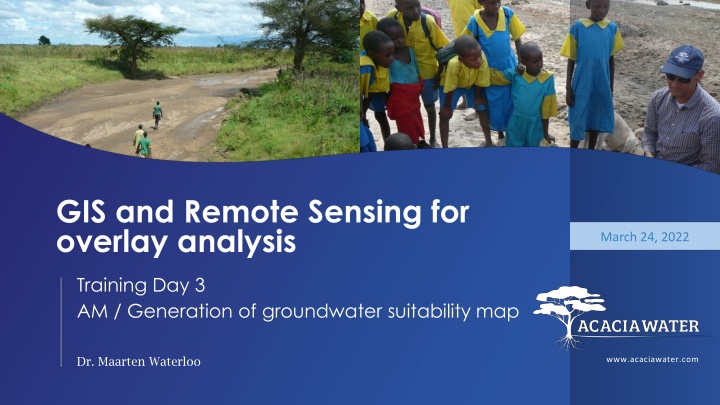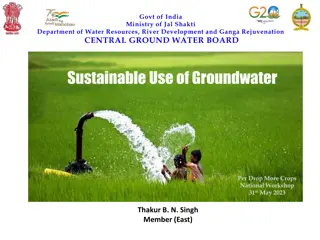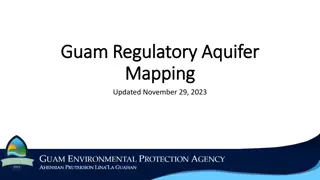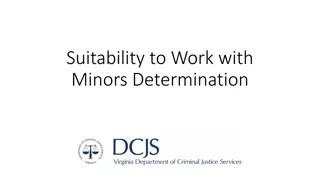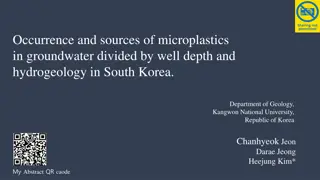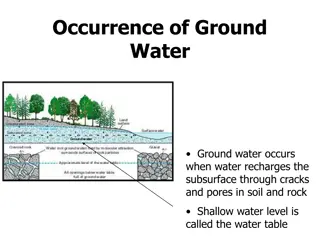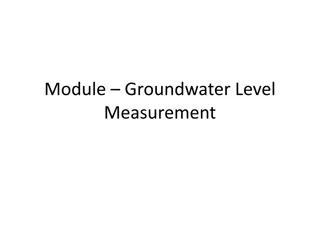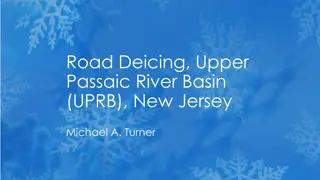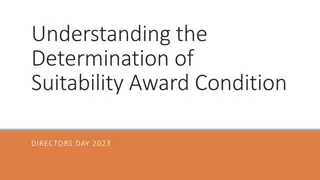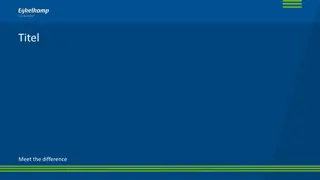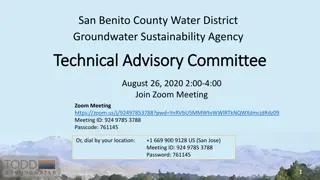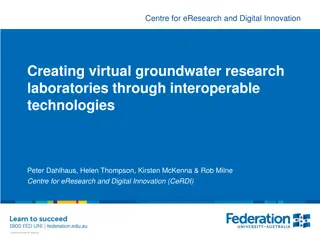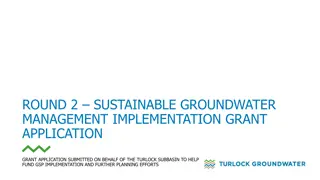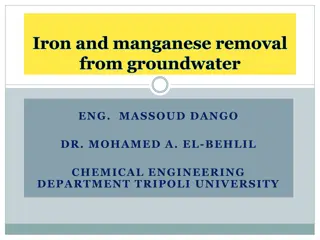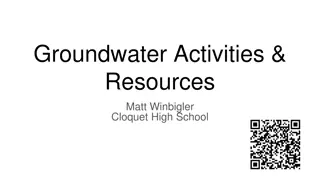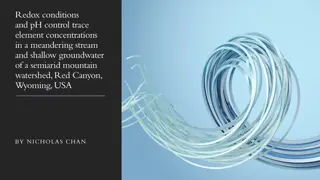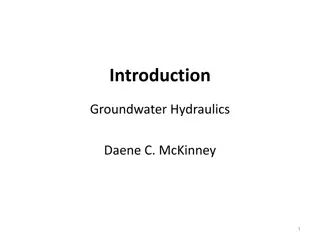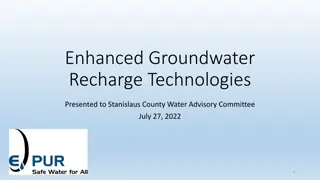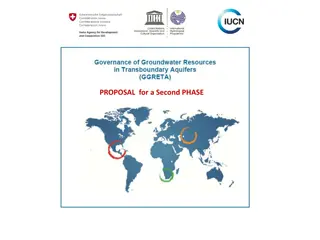Groundwater Suitability Mapping Training Overview
The training program focuses on GIS and Remote Sensing for overlay analysis, with an emphasis on generating groundwater suitability maps. Dr. Maarten Waterloo leads the session, covering topics like data processing, automation, and sensitivity analysis. The program includes hands-on activities and explores principles for overlaying input layers to calculate average suitability and accuracy. Participants gain practical skills in QGIS automation and get introduced to Google Earth Engine and Python. Join to enhance your knowledge and skills in groundwater mapping techniques.
Download Presentation

Please find below an Image/Link to download the presentation.
The content on the website is provided AS IS for your information and personal use only. It may not be sold, licensed, or shared on other websites without obtaining consent from the author.If you encounter any issues during the download, it is possible that the publisher has removed the file from their server.
You are allowed to download the files provided on this website for personal or commercial use, subject to the condition that they are used lawfully. All files are the property of their respective owners.
The content on the website is provided AS IS for your information and personal use only. It may not be sold, licensed, or shared on other websites without obtaining consent from the author.
E N D
Presentation Transcript
GIS and Remote Sensing for overlay analysis March 24, 2022 Training Day 3 AM / Generation of groundwater suitability map Dr. Maarten Waterloo www.acaciawater.com
Training program Day Program of activities (AM/PM) Day 1 Introduction to overlay analysis & QGIS / Input data processing (lithology, land use) Tue., March 22nd Day 2 Input data processing (recharge, TWI) / Input data processing (lineament proximity & density) Wed., March 23rd Day 3 Suitability map generation / Automation of suitability mapping Thu., March 24th Day 4 Suitability map styling / Introduction to Google Earth Engine Fri., March 25th Day 5 Introduction to Python Sat., March 26th
Detailed program Day 3 Time Activities 9:00 12:00 Generation of a groundwater suitability map 12:00 13:00 LUNCH BREAK 13:00 14:20 Introduction to automation in QGIS 15:40 16:00 Automation of groundwater suitability mapping
Overlay analysis - Workflow STEP 0: Data acquisition and basic processing STEP 1: Pre-processing > Clip, resample, reproject, classify, calculate STEP 2: Overlaying > Classes and scores, weights, average suitability STEP 3: Sensitivity analysis
Step 2 - Principle Inputs: 6 overlay layers Classes and scores per layer Weights per cluster Methods: Classify overlay layers Calculate suitability per pixel: ??= ????? Calculate pseudo accuracy: (???? ????)/???? Output: Average suitability and accuracy
Overlay 1 Score the input layers between 0 and 1 Lithology (7 classes) Land use (5 classes) Slope (degree, 4 classes) Recharge (mm/y, 4 classes) Lineament density (km/km2, 5 classes) Lineament proximity (distance in m, 5 classes) {
Overlay 1 Classes and scores Slope score 0 - 3 0.6 Lithology class score 3 - 5 0.3 Loose Quaternary sediments 0.250 5 - 15 0.1 Rift pyroclastics 0.100 > 15 0.0 Upper basalts 0.350 Lower basalts 0.150 Land use score Mesozoic sediments 0.050 Crop land 0.44 Low grade basement 0.075 Bush, rangeland 0.29 Forest 0.17 High grade basement 0.025 Bare soil 0.07 Urban 0.03
Overlay 1 Classes and scores Lineament proximity score <500 0.62 500 1000 0.16 1000 2000 0.11 Recharge score 2000 4000 0.07 <25 0.05 >4000 0.04 25 50 0.11 50 100 0.27 Lineament density score > 100 0.57 <0.3 0.03 0.3 0.6 0.07 0.6 0.9 0.15 0.9 1.2 0.30 > 1.2 0.45
Overlay 2 - Weights Layer weights Tigray, Amhara Normalized weight Relative weight 0.11 0.21 0.55 0.88 0.33 1.00 0.01 Layer Landuse Soil Recharge Topographic location Linaments Permeability Eigenvalue 0.28 0.53 1.40 2.24 0.83 2.54 Consistency Index 0.04 0.07 0.18 0.29 0.11 0.32
Overlay 3 - Calculations Calculate lineament score Density * 0.8 + Proximity * 0.2 Calculate suitability score Sum of (layer score) x (layer weight)
Thank you for your attention February 26, 2019 van Hogendorpplein 4, 2805 BM Gouda, the Netherlands telephone: +31 (0)182 - 686 424 info@acaciawater.com | www.acaciawater.com
